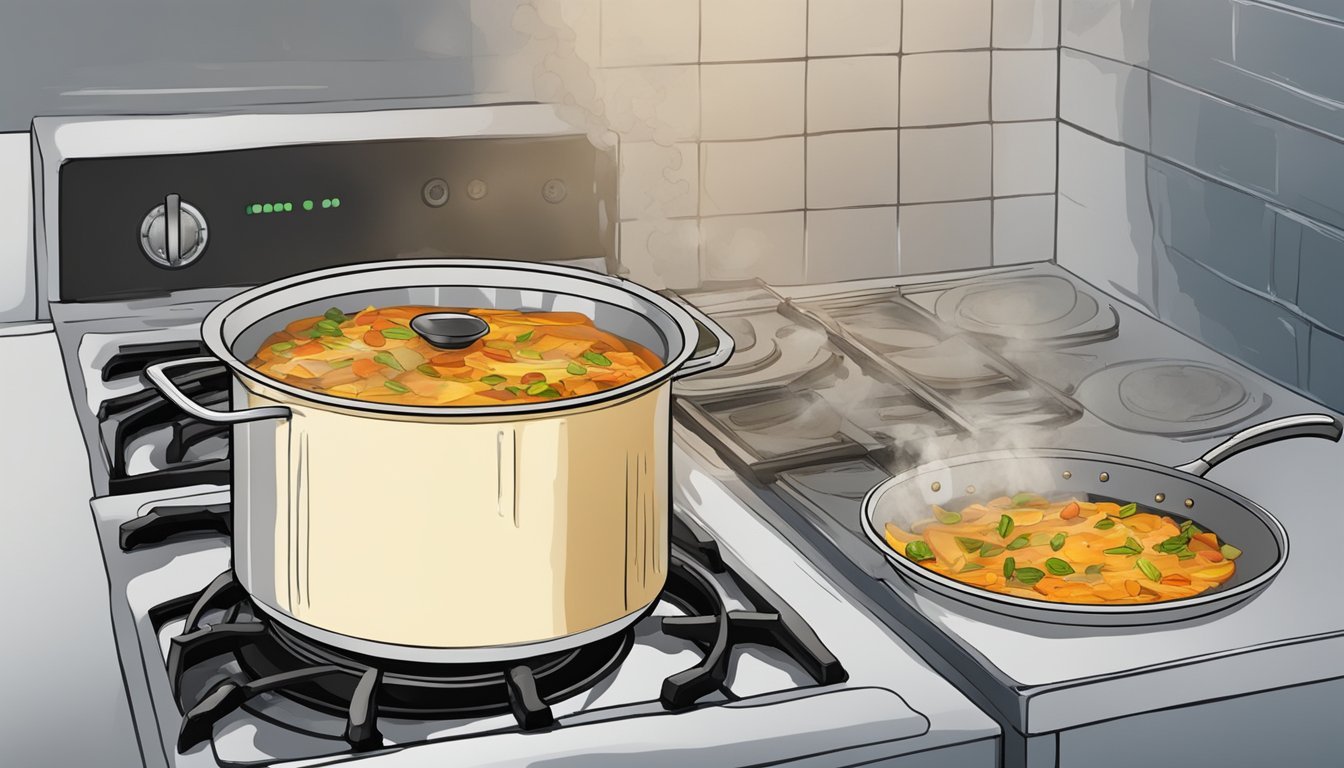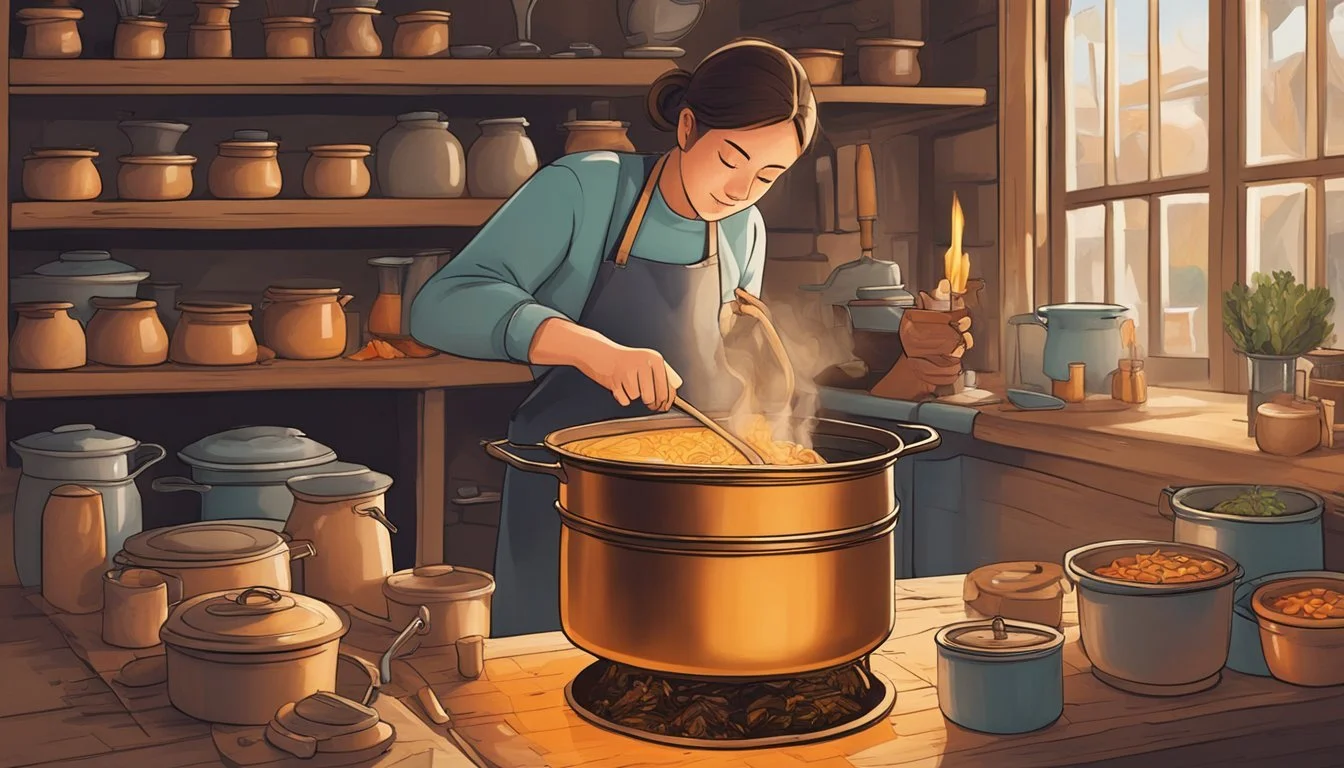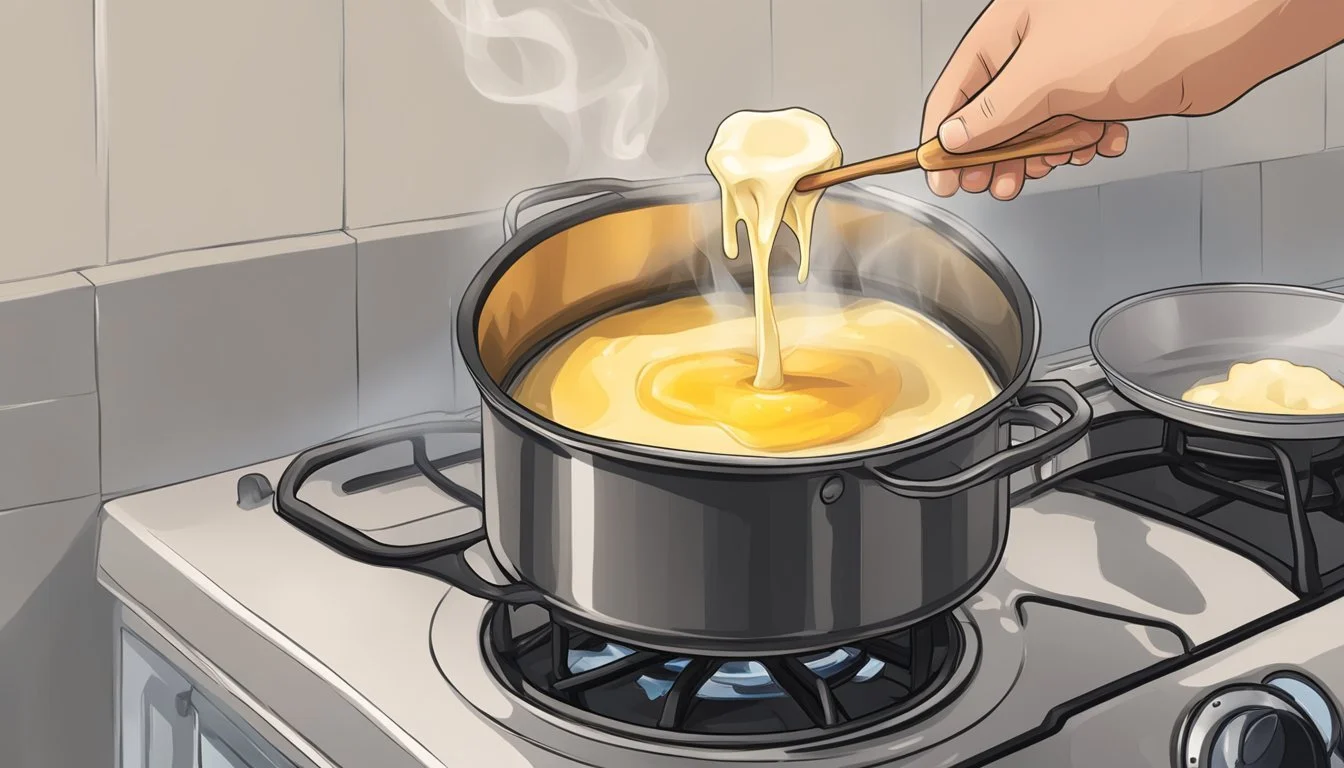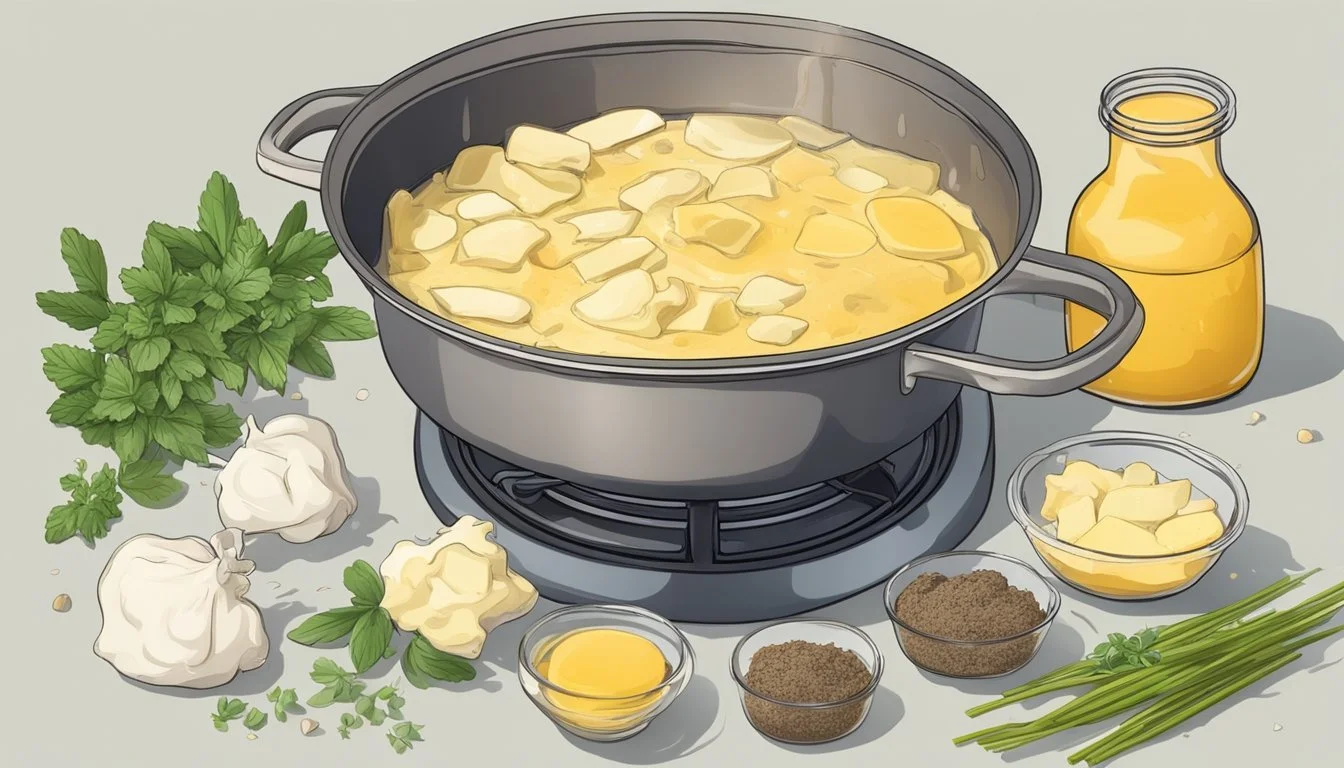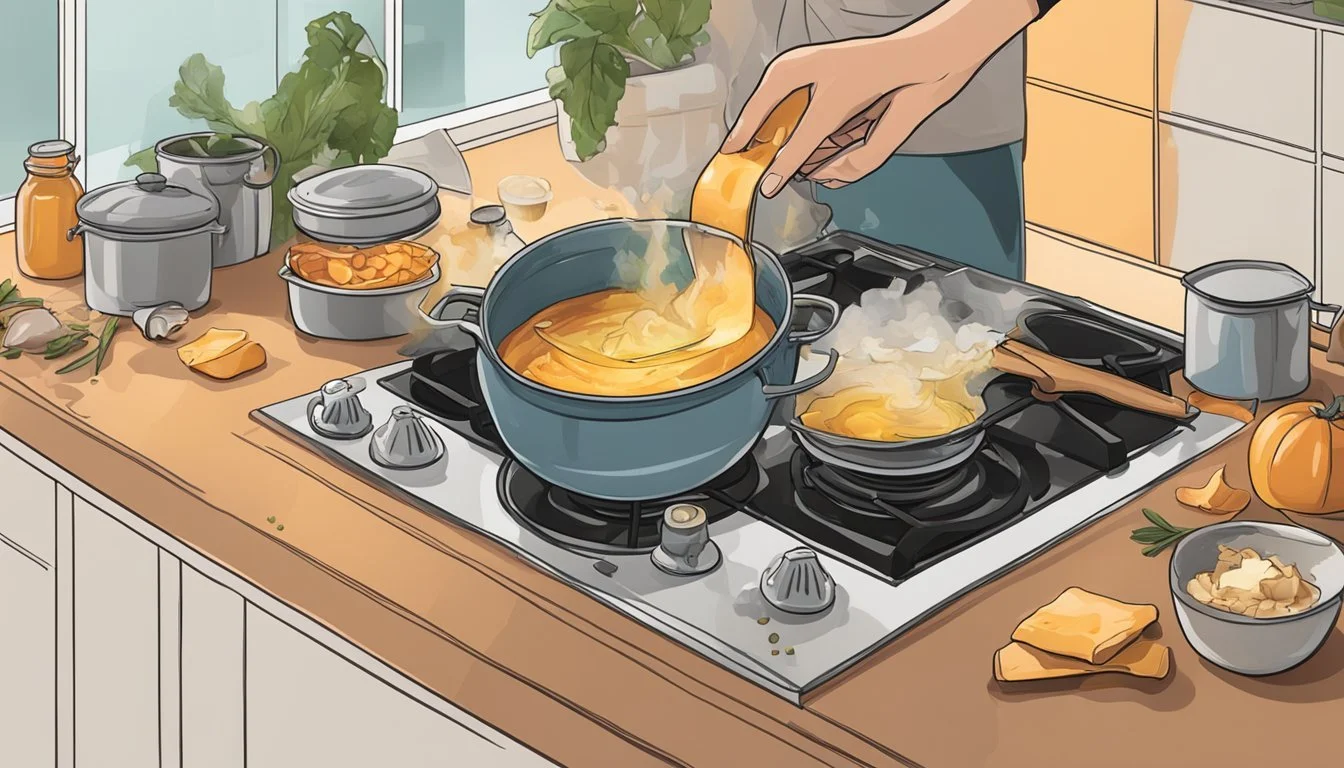The Art of Making Beef Tallow Candles from Kitchen Scraps
A Step-by-Step Guide
Making beef (What wine goes well with beef?) tallow candles is a practice that transforms kitchen scraps into a source of sustainable light. This age-old craft taps into the DIY ethos, enabling individuals to repurpose beef fat—a byproduct often discarded—into something both useful and environmentally conscious. As more people seek to minimize waste, the appeal of tallow candles garners renewed interest. The process not only recycles what would otherwise be waste but also creates candles that burn cleanly without the reliance on petroleum-based paraffin.
Beef tallow, once a staple ingredient in candle making, offers a high-quality and natural alternative to modern synthetic options. Its availability as a byproduct of cooking and butchery makes it an excellent candidate for candle making enthusiasts looking to reduce their footprint. The slow and steady burn of a tallow candle emits a warm, soothing light, and when made properly, it's virtually free of the soot and chemicals commonly associated with other types of candles.
The art of making these candles involves a few straightforward steps that are easily mastered with a bit of practice. The tallow is rendered from beef fat, clarified to remove impurities, and then poured into molds or containers to set. As the tallow cools and solidifies, it transforms into a stable form, ready to be fitted with a wick. The crafting of tallow candles not only offers a nod to self-reliance but is also an embodiment of thoughtful, intentional living.
Historical Significance of Tallow Candles
Tallow candles date back to ancient times, with roots tracing to civilizations such as the Egyptians and Romans. These candles were predominantly made from animal fats, primarily sheep or beef. Due to the abundance of the raw materials and the simplicity of the candle-making process, tallow candles were among the earliest forms of artificial lighting.
In the Middle Ages, tallow candles became a household staple. They provided light for homes and were crucial in ceremonies and religious practices. Historical evidence reveals that the utility of tallow candles extended beyond mere illumination; they also symbolized enlightenment and hope during periods of darkness.
One key aspect that differentiated tallow candles from other lighting forms was their affordability. Unlike beeswax candles, which were a luxury product often reserved for the wealthy or for religious ceremonies, tallow candles were accessible to the general population, making them an integral part of everyday life.
During the 18th century, advancements in candle making, such as the introduction of the moulded candle, made production more efficient and improved the quality of the candles. However, even with these improvements, tallow candles would produce a less favorable odor when lit and would often create smoke, a minor drawback compared to their significance and widespread use.
In various cultures, the type of fat used in tallow candle production was dictated by dietary laws or availability. For instance, the use of non-kosher fats in tallow candles was not permitted in Judaism during certain festivities. Despite such restrictions, the historical footprint of tallow candles is significant, marking them as one of the primary sources of light before the advent of modern lighting solutions and serving as emergency candles during times of need.
Benefits of Beef Tallow Candles
Beef tallow candles offer practical and healthful alternatives to conventional wax candles, addressing both ecological concerns and the well-being of users through their natural composition.
Environmental Advantages
Beef tallow serves as an eco-friendly option in candle making for several reasons. First, they are a byproduct of the beef industry, repurposing what would otherwise be waste into a useful item. Unlike paraffin candles, which are derived from nonrenewable petroleum, beef tallow is a renewable resource. Additionally, they generate less soot and may be less damaging to home air quality.
Renewability: As tallow is an animal byproduct, utilizing it in candles prevents waste and capitalizes on existing resources without reliance on petroleum extraction.
Biodegradability: Tallow candles are more biodegradable than paraffin wax, reducing environmental impact when discarded.
Health and Safety
Beef tallow candles are perceived as safer for indoor air quality since they burn cleaner than paraffin, which has been linked to indoor air pollutants. These toxin-free candles avoid releasing harmful chemicals into the air, potentially reducing the risk of health problems caused by inhaling toxic substances.
Toxin-Free: They do not release toxic chemicals as some paraffin candles may, which can release benzene and toluene when burned.
Clean Burn: With tallow candles, the wax burns evenly, producing minimal soot, potentially offering a cleaner option for those concerned about indoor air pollutants.
Preparing the Tallow
Crafting candles from beef tallow begins with two crucial steps: rendering the fat into tallow and purifying it for use. This ensures a clean burn and optimal consistency in the final product.
Rendering Beef Tallow
To render beef tallow from kitchen scraps, one must begin with beef suet, which is the hard fat around the kidneys and loins. The process involves slow cooking the fat trimmings, allowing the fat to melt away from any remaining tissue or muscle.
Collect fat trimmings: Save scraps from beef cuts, focusing on the harder fat, which renders down better.
Chop the fat: Cut the fat into small pieces to maximize the surface area and expedite the rendering process.
Cook the fat: Place the trimmings in a pot over low heat, stirring occasionally. As the suet gently cooks, the fat begins to liquefy.
Strain the liquid: Once rendered, the liquid tallow should be free from solids. Strain it through a cheesecloth to remove any debris.
This will yield rendered tallow, which is the base for the candle-making process. The key is to maintain a low temperature to prevent burning and ensure all the fat is rendered.
Purifying Rendered Tallow
After rendering, the tallow must be purified to remove impurities that could affect the quality of the candles. Purification, or clarifying, improves the scent and color of the tallow, resulting in a more appealing candle.
Reheat the tallow: Melt the rendered tallow again over low heat.
Add water: Mix in a small amount of water to help bind to impurities.
Simmer: Allow the mixture to simmer gently. Impurities will either float to the top or settle to the bottom.
Cool and separate: Once cooled, the solidified tallow can be lifted away from any residue water. It should be noticeably cleaner.
The purified tallow is then ready to be crafted into candles. It should be odorless and pale, ideal for producing a consistent flame.
Materials and Tools
In creating beef tallow candles from kitchen scraps, one must gather specific materials and tools critical for the process. Precision and care in selecting these items will ensure a successful and satisfying candle-making experience.
Essential Materials
Tallow: Obtained from beef fat scraps, which are rendered down to clean, pure fat.
Wicks: Ideally, one should use thick twisted cotton wick for a stable burn. The length of the wick should be appropriate for the size of the candle intended.
Canning Jars: Glass containers such as mason jars or any other heat-resistant glass jar varying in sizes according to preference.
Additional Tools
Double-Boiler: To securely melt the tallow without over-heating it. It's possible to improvise with a heat-resistant bowl over a pot of water if a double-boiler is not available.
Strainer: A fine mesh strainer is crucial for purifying the rendered fat.
Wick Center: A tool or method for ensuring the wick remains centered while the tallow solidifies, such as a wick centering device or a makeshift solution using common household items.
Thermometer: Useful for monitoring the tallow's temperature during the melting process to avoid overheating.
Materials and tools are to be assembled before starting the candle-making process to ensure an organized and smooth operation.
Making the Candle
In this section, readers will learn the process of creating a beef tallow candle, from melting and preparing the tallow to setting the wick and achieving the perfect solidification. Attention to detail and temperature control is crucial for a successful candle-making experience.
Melting and Mixing
To begin, one must melt the tallow. Using a double boiler ensures even heat distribution and prevents the tallow from burning. The tallow should be heated until it reaches a liquid state, monitoring the temperature cautiously. It is typically recommended to slowly melt at a low temperature to maintain the integrity of the tallow. Stirring occasionally can promote a uniform temperature throughout the tallow.
Setting the Wick
While the tallow melts, it is time to prepare your jar and wick. One can use a hot glue gun to secure the wick's base to the bottom center of the jar, ensuring it stands upright during the pouring process. The wick should be taut; an option is to wrap the top end of the wick around a pencil or stick placed across the jar's opening, helping maintain its central position.
Pouring and Solidifying
Once the tallow is fully melted and mixed, and the wick set, the next step is to carefully pour the liquid tallow into the prepared jar. Ensuring the jar is gently pre-warmed will mitigate the risk of the glass cracking from the temperature shock. Following the pour, the candle requires several hours to solidify properly. It's best to let it cool at room temperature in a location free from drafts to prevent abnormalities in the candle's surface as it sets.
Customizing Your Candles
Making beef tallow candles from kitchen scraps offers a sustainable way to create ambiance and personalise your home. A candlemaker can tailor the sensory attributes of their candles by introducing fragrances and colors, and maintaining them carefully to extend their life.
Adding Fragrances and Colors
Beef tallow candles can be customized with a variety of essential oils for fragrance and natural dyes for color. For adding scents, one should introduce essential oils once the tallow begins to cool but is still liquid. Stirring the oils gently ensures even distribution. Common choices include:
Lavender: For a calming atmosphere
Rosemary: To evoke a sense of freshness
Cedarwood: Ideal for a warm, woodsy aroma
To modify the color of the candles, natural dyes can be added during the melting process. It's crucial to use dyes compatible with candle making, as some can clog the wick or affect burning.
Candle Care and Maintenance
Post-production, proper care is essential for the longevity and performance of the candles. The following points serve as basic maintenance guidelines:
Trimming the Wick: Before each use, wicks should be trimmed to about 1/4 inch to ensure a cleaner burn and prevent soot.
Herb Preservation: If herbs are added on the surface for decoration or additional scent, they should be completely dried to prevent mold and should not be placed too close to the wick to avoid flammability concerns.
Using these customizations, each candle emerges as a unique product, infused with a personal touch and ready to enhance any setting.
Practical Applications
In the context of utilizing beef tallow candles, their applications extend beyond mere illumination to encompass aspects of emergency preparedness and providing a sense of well-being through aromatherapy and ambiance.
Emergency Preparedness
When power outages occur, particularly during unpredictable weather or other emergencies, beef tallow candles serve as a reliable source of light. They're especially valuable on a homestead where self-sufficiency is crucial. Having candles made from kitchen scraps is both economical and practical, ensuring that one is prepared in the event of sudden electricity loss. Additionally, their long-burning nature makes them suitable for extended use during these circumstances.
Aromatherapy and Ambiance
Beef tallow candles can easily be infused with essential oils to create a calming atmosphere for aromatherapy. Choices such as lavender for relaxation or cinnamon for invigoration can enhance the ambiance of any room. These candles can be lit to provide a gentle glow that creates a cozy and welcoming environment, offering both visual and olfactory comfort to the surroundings.
Storing Beef Tallow Candles
Storing beef tallow candles correctly is essential for maintaining their quality and ensuring their longevity. It's imperative to pay attention to temperature, humidity, and light exposure.
Temperature: Beef tallow candles should be kept in a cool, consistent temperature to prevent melting and deformation. An ideal temperature range is between 50-70°F (10-21°C).
Too Hot: If candles are exposed to high temperatures, they can begin to melt.
Too Cold: Excessively cold temperatures can cause the tallow to crack.
Humidity: Dry conditions are preferable for storage as high humidity can affect the burn quality and potentially lead to mold growth on the wick or the candle itself.
Airtight Container: An airtight container can help control the humidity levels around the candles.
Light: Direct sunlight can cause fading and distortion, so store candles in a dark place.
Storage Container:
Materials: Glass or metal containers are ideal. Plastic should be avoided as it can interact with the tallow over time.
Lining: Line the container with acid-free paper to protect the candle's surface.
Special Considerations:
Kidney and Liver: While not directly related to candle storage, it's important to note that beef tallow is derived from fat typically around the loins or kidneys, and its purity can indirectly affect the quality of the candles. It does not have any direct impact on the storage process itself.
To summarize the storage steps:
Choose a cool, dark, and dry location.
Maintain a stable temperature between 50-70°F (10-21°C).
Store candles in airtight glass or metal containers.
Line containers with acid-free paper for added protection.
Avoid storing candles in areas with drastic temperature changes.
Safety Tips and Best Practices
When crafting beef tallow candles from kitchen scraps, it is essential to prioritize safety. Utilizing proper techniques ensures a successful and hazard-free experience.
Preparing Tallow: Always clean the tallow thoroughly to remove impurities before melting. This reduces the risk of unpleasant odors and smoke during the candle-making process and when burning the candle.
Melting Process: One should melt tallow using a double boiler, keeping the heat low and consistent to prevent burns and avoid fire hazards. Tallow should be melted slowly to prevent splattering, which can cause burns or fires.
Handling Hot Tallow: Care must be taken when handling hot tallow. Wearing heat-resistant gloves can protect skin from potential splashes or spills.
Pouring Tallow: Use caution when transferring the melted tallow into molds or containers. Pre-warm the containers to prevent cracking, and ensure they are completely dry to avoid the formation of water pockets that could cause splattering.
Ventilation: Maintain good ventilation in the candle-making area. This minimizes inhalation exposure to any fumes and helps in dissipating heat.
Don'ts Do's Don't rush the melting process. Do keep the heat low and steady. Don't leave the melting tallow unattended. Do stay vigilant to prevent accidents.
In summary, adhering to these safety tips and best practices ensures the safe creation of tallow candles.
Beyond Candles
While tallow is traditionally used for making candles, its utility extends into other realms, such as cooking and skincare, each benefitting from tallow's unique properties.
Tallow in Cooking
Tallow, rendered beef fat, is prized in cooking for its ability to impart a rich flavor and crisp texture. It is a preferred fat for:
Frying: Due to its high smoke point, tallow is stable for frying, making it excellent for creating crispy textures in foods like french fries and fried chicken.
Flavor Enhancer: Tallow adds depth to dishes, contributing a savory note that vegetable oils cannot match.
Tallow in Skincare
In skincare, tallow finds its place due to its compatibility with human skin oils. It can be used in:
Tallow Balm: A hydration hero, this balm offers deep moisturizing properties for dry and chapped skin.
Soap Making: Tallow is a key ingredient in many traditional soaps, providing a creamy lather and contributing to the soap's hardness.
Utilizing tallow in these ways not only maximizes the value of kitchen scraps but also honors a tradition of resourcefulness.

